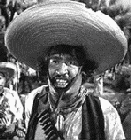Welcome to one of the most active flamenco sites on the Internet. Guests can read most posts but if you want to participate click here to register.
This site is dedicated to the memory of Paco de Lucía, Ron Mitchell, Guy Williams, Linda Elvira, Philip John Lee, Craig Eros, Ben Woods, David Serva and Tom Blackshear who went ahead of us.
We receive 12,200 visitors a month from 200 countries and 1.7 million page impressions a year. To advertise on this site please contact us.
|

|
|
Following the leader
|
You are logged in as Guest
|
|
Users viewing this topic: none
|
|
Login  | |
|

   
guitarbuddha
Posts: 2970
Joined: Jan. 4 2007

|
 RE: Following the leader (in reply to Miguel de Maria) RE: Following the leader (in reply to Miguel de Maria)
|
|
|
Hey Miguel. I hope you don't mind I thought I would chip in a bit more as I struggle with 'harmonising on the fly' much more than I would like to.
Have you tried 'reverse engineering' a progression ? What I mean is take a standard tune and harmonise it as simply as possible using just I, IV and V. Then look at how the original arranger elaborated on this.
Most standards tunes are when you look at them pretty much diatonic to the home key ,give or take a few chromatic approach tones. Yet if you look at the harmony there seem to be lots of modulations. So given that the tune really doesn't actually modulate what is happening ? Mostly the apparent modulations are just elaborations on real simple I IV V stuff.
Like this, suppose all that is needed for the melody to be supported is two bars on one a bar on four and then back to one
I, I, IV, I
now decide that you are gonna hit vi (relative minor) for the second bar for variety
I,iv,IV,I
then you introduce the secondary dominant to get to iv
I III7, vi ,IV,I
but now the progression seems lopsided because the rate of chord change is uneven so you precede the IV with its dominant -I7-so you get this
I III7,vi I7,IV ,I
Now there is a hollow spot in the third and fourth bar so on the second half of the bar you might change the bass note on IV to the V ( in the key of F that would be Bb/C) and in the fourth bar you add a turnaround on the dominant so you get.
I III7, vi I7a,IV IV/V, I V7
In the key of F (and including a stepwise bass line) this would be
F A7/E, Dm F7/C, Bb / C11sus, F6 C7
That is that is the opening of 'I Wish I Knew How It Feels to be Free'.
It seems like a lot and it is but what you want to do aurally is focus on the I IV and V functions and become more aware of the routes that can be taken between them. Learn some of these elaborations like 'chord licks' through the cycle of fifths and your ear will start to make connections on the fretboard and eventually it will start to become intuitive.
Here is another one that comes up A LOT in latin tunes.
Four bar minor blues (I am gonna abandon numerals here and present it in Am)
Dm,Am,E7,Am
Now you introduce a minor dominant pair at the start (Dm/G7) and substitute the relative major for Am (C)
this gives you
Dm/G7,C,E7,Am
then you break down the E7 to Bm7b5/E7b9
Dm/G7,C,Bm7b5/E7,Am
Like the first progression there are now two hollow spots. So you take the CMaj and run through to Fmaj and at the end Am to A7 (to better prepare the Dm).
so you get this
Dm/G7,Cmaj/Fmaj,Dm7b5/E7b9,Am6 A7b9
It seems like a lot but really it is just a different way of playing the classic four bar minor blues i,iv,V,i.
Also it is important to note that the last progression (Dm/G7,Cmaj/Fmaj,Dm7b5/E7b9,Am6 A7b9) looks like it is based on the cycle of fifths and in a way I suppose that it is. But it can be much more empowering to realise that it is also just i,iv and V with a few bells and whistles. And this is real important to a lot of improvised music. If the chords are simple then you play as if they were complex and if they are complex you play as if they were simple and the results in both cases are surprisingly sophisticated and compelling.
D.
|
|
|
|
REPORT THIS POST AS INAPPROPRIATE |
Date Mar. 21 2015 22:18:31
 |
|

   
Miguel de Maria
Posts: 3532
Joined: Oct. 20 2003
From: Phoenix, AZ

|
 RE: Following the leader (in reply to Miguel de Maria) RE: Following the leader (in reply to Miguel de Maria)
|
|
|
D, damn good lesson there, man! I am going to have to get my guitar and mess with this tomorrow, I am hurting my head trying to follow this mentally after two weddings today.
On one of the weddings I had to learn tunes, "Wouldn't it be nice" by the Beach Boys and "Can't Help Falling in Love" as sung by Elvis. The Beach Boys song was surprisingly complex and I actually don't even understand how it relates. Seemed to modulate from Ab to E to Fm and back to E. However, it was pretty easy to learn and play it by memory. "Can't Help" is very simple and the main melody is based on a descending bassline, all simple chords. I stole the Beach Boys arrangement from some guy on Youtube and the Elvis song took only a little longer than hearing it; still, that's a far cry from sitting in and not missing a beat.
What little harmony chops I have is in classical pieces, so the jazz thing is new to me. I tend to look at the root movement and see so much fifth and fourth moves, secondary dominant or circle of V or IV stuff. I suspected that the underlying basis of the tunes was extremely simple, the basic functions merely elaborated by more or less conventional and idiomatic means. I guess if I hit this stuff, I will pick them up sooner or later.
_____________________________
Connect with me on Facebook, all the cool kids are doing it.
https://www.facebook.com/migueldemariaZ
Arizona Wedding Music Guitar
|
|
|
|
REPORT THIS POST AS INAPPROPRIATE |
Date Mar. 22 2015 3:19:23
 |
|

   
Miguel de Maria
Posts: 3532
Joined: Oct. 20 2003
From: Phoenix, AZ

|
 RE: Following the leader (in reply to Miguel de Maria) RE: Following the leader (in reply to Miguel de Maria)
|
|
|
Okay, I went through the elaborations. I have always thought the circle of Vs to be just, well, circle of Vs, but I do like the way you have analyzed it. Certainly the more valid ways to look at it, the more ideas that can come and the firmer the whole structure will be in my mind. One question, you have put an Am6... is that just a color tone? Conventional? How does that come about?
I am laughing at the idea of playing that dinky Beach Boys song with the chords you put. It is cool, I'm just imagining the folks who hired me at the wedding, looking over at me while I am playing this jazzed up version during the recessional. It would come across as a musical joke, I'm thinking! But it is cool. :)
_____________________________
Connect with me on Facebook, all the cool kids are doing it.
https://www.facebook.com/migueldemariaZ
Arizona Wedding Music Guitar
|
|
|
|
REPORT THIS POST AS INAPPROPRIATE |
Date Mar. 22 2015 16:44:30
 |
|

   
Miguel de Maria
Posts: 3532
Joined: Oct. 20 2003
From: Phoenix, AZ

|
 RE: Following the leader (in reply to Miguel de Maria) RE: Following the leader (in reply to Miguel de Maria)
|
|
|
D,
thanks for the recommendation. The tunes I play are: Girl from you know where, Insensatez, Corcovado, Manha do Carnaval, A Man and a Woman (not Jobim); sometimes I play Chega de Saudade, Desafinado, and One Night Samba, but I've let those go and forget how to play them!
Mark,
yeah, I don't really know, I just work here. :) That guy actually took about a week and several mumbling phone calls to get finally turn down the gig, since he failed to get out of his steady restaurant gig. I don't know what took so long to ask his employer.
By the way, this website seems to have some very cool articles:
http://jazzadvice.com/6-common-chord-relationships-other-than-ii-v-i/
_____________________________
Connect with me on Facebook, all the cool kids are doing it.
https://www.facebook.com/migueldemariaZ
Arizona Wedding Music Guitar
|
|
|
|
REPORT THIS POST AS INAPPROPRIATE |
Date Mar. 23 2015 17:27:35
 |
|

   
Miguel de Maria
Posts: 3532
Joined: Oct. 20 2003
From: Phoenix, AZ

|
 RE: Following the leader (in reply to guitarbuddha) RE: Following the leader (in reply to guitarbuddha)
|
|
|
Yeah, I am practicing the harmonic snippets the same way to try to get command of the sound (and fingering) of the chord changes. It seems that just playing songs does not give me the individual gestures or progressions very efficiently or securely. I am probably practicing 2-3 versions of the licks as well as the chord changes, because I don't want to be playing something up at the 11th fret or something. I am keeping in mind the scale degrees of each note. Geez, I sound so diligent and disciplined. If I just did this every day, I'd be exactly where I need to be in 10 years or so! :)
I have Aguado's method, and I think he approached these things in this kind of modular, building-block fashion. It always struck me as a good idea. Unfortunately, CG is a hodge-podge of styles, so many players end up just being paint-by-numbers note-players, relying on brute intellectual processing power and repetition rather than secure idiomatic mastery. One of the many advantages of flamenco or jazz or rock over classical learners.
_____________________________
Connect with me on Facebook, all the cool kids are doing it.
https://www.facebook.com/migueldemariaZ
Arizona Wedding Music Guitar
|
|
|
|
REPORT THIS POST AS INAPPROPRIATE |
Date Mar. 24 2015 17:29:40
 |
|

   
Mark2
Posts: 1871
Joined: Jul. 12 2004
From: San Francisco

|
 RE: Following the leader (in reply to Miguel de Maria) RE: Following the leader (in reply to Miguel de Maria)
|
|
|
Miguel,
Thanks for the link to the articles. Lately I've been spending some time playing over changes and although I hear what David is saying, I think it's helpful to practice two chord changes. For example, there is the parallel modulation from major to minor. It happens in "all the things you are" in a sequence that goes Db major 7th, Db minor 7th, Ab major, etc.
I find that working out some reliable major to minor licks drawn directly from the chord shapes and chord tones seems to work pretty well. By expanding that exercise to various chord shapes and inversions, I believe a person will be pretty comfortable every time that sequence comes up, regardless of key. The problem, and the joy, of studying jazz is that there are so many different approaches(sequences, scales, arpeggios, chord tones, triad stacking, symmetrical scales, sidestepping, playing off the extensions, etc) that to become a well versed improviser it is a lifetime of study. Or, if you are exceptionally talented, I think the very best way to play over changes is to simply hear the changes, hear the melody you want to play, and play it. That is a very tall order however.
I also hear what Carol Kaye is saying because I used to be that guy. I'd learn a standard, then figure out what scales I'd play over various chords. It just didn't translate to good jazz playing. You really have to show the listener you know the individual chords, even if they can be covered with a single scale, in order to sound like a decent jazz player IMO. Good jazz players can demonstrate the harmony of the tune just by playing single note lines. I think that is also an excellent exercise in getting to know a tune as an improviser. In any case, I see flamenco moving more in this direction(jazz type improvisation), and despite a recent article by the great aficionado Brook Zern about the waning popularity of jazz and it's incompatibility with flamenco, I don't see an immediate future where flamenco guitarists don't know their whole tone and diminished runs.
|
|
|
|
REPORT THIS POST AS INAPPROPRIATE |
Date Mar. 24 2015 18:32:17
 |
|

   
Mark2
Posts: 1871
Joined: Jul. 12 2004
From: San Francisco

|
 RE: Following the leader (in reply to guitarbuddha) RE: Following the leader (in reply to guitarbuddha)
|
|
|
Well that's a different thing than what I was writing about. That particular skill, while it would translate to single note soloing in terms of general ear training, is not the most direct path to be able to take a great solo on a standard IMO. When I took private lessons with a great jazz player, the first thing he had me do was learn 40 standards-head, changes, make an original chord melody arrangement, and solo over it. While I think this approach is still very valid, as an 18 year old kid, I had little interest in sitting in a lounge doing solo jazz standards. But, I did enjoy playing in the university's big band, and the lessons I learned from him obviously were not completely lost. What I was referring to in my previous post were those few great jazz players who can blow amazing solos by ear without thinking about scales or even chords. From the brain directly to the instrument. It's not possible to know what someone is thinking, but I believe there are a small percentage of jazz players who can do it this way. I personally don't think working out tunes in 12 keys in open position will get you there but I could be wrong. Maybe you were talking about trying to pick out the melody-that does make a lot of sense in the context I'm thinking about. Now, pushing 57 years of age, I still have zero interest of playing solo jazz standards in a restaurant. I'd much rather play flamenco if I wanted to do that gig, and it pays way better. But I am still interested in improving my single note playing, in any style.
quote:
ORIGINAL: guitarbuddha
quote:
ORIGINAL: Mark2
Or, if you are exceptionally talented, I think the very best way to play over changes is to simply hear the changes, hear the melody you want to play, and play it. That is a very tall order however.
Hi Mark I used to think that this was a pretty tall order (and it still is) but the more I think about it the more I realise that the real skill needed is playing tunes by ear. There is nothing too difficult about this is the problem is that very people practice this systematically.
A great tune to practice it with is ,La Vie en Rose'. Easy right ???? Try it in twelve keys in open position and see how you go...... you might get a fright. So I am gonna work on it for a while in the hope that if I am improvising and by some miracle a melody as subtle and perfect as this occurs to me I will have the SKILL (not talent) of finding it.
I know a sax player and I was talking to him about playing by ear and he looked at me pityingly and said....'It's a skill', it takes work. And it gives you the skill of playing tunes as opposed to finger patterns.
D.
(by the way I am ranting generally but not because anyone here deserves it).
|
|
|
|
REPORT THIS POST AS INAPPROPRIATE |
Date Mar. 24 2015 20:29:46
 |
|
 New Messages New Messages |
 No New Messages No New Messages |
 Hot Topic w/ New Messages Hot Topic w/ New Messages |
 Hot Topic w/o New Messages Hot Topic w/o New Messages |
 Locked w/ New Messages Locked w/ New Messages |
 Locked w/o New Messages Locked w/o New Messages |
|
 Post New Thread
Post New Thread
 Reply to Message
Reply to Message
 Post New Poll
Post New Poll
 Submit Vote
Submit Vote
 Delete My Own Post
Delete My Own Post
 Delete My Own Thread
Delete My Own Thread
 Rate Posts
Rate Posts
|
|
|
Forum Software powered by ASP Playground Advanced Edition 2.0.5
Copyright © 2000 - 2003 ASPPlayground.NET |
9.399414E-02 secs.
|


 Printable Version
Printable Version









 New Messages
New Messages No New Messages
No New Messages Hot Topic w/ New Messages
Hot Topic w/ New Messages Hot Topic w/o New Messages
Hot Topic w/o New Messages Locked w/ New Messages
Locked w/ New Messages Locked w/o New Messages
Locked w/o New Messages Post New Thread
Post New Thread